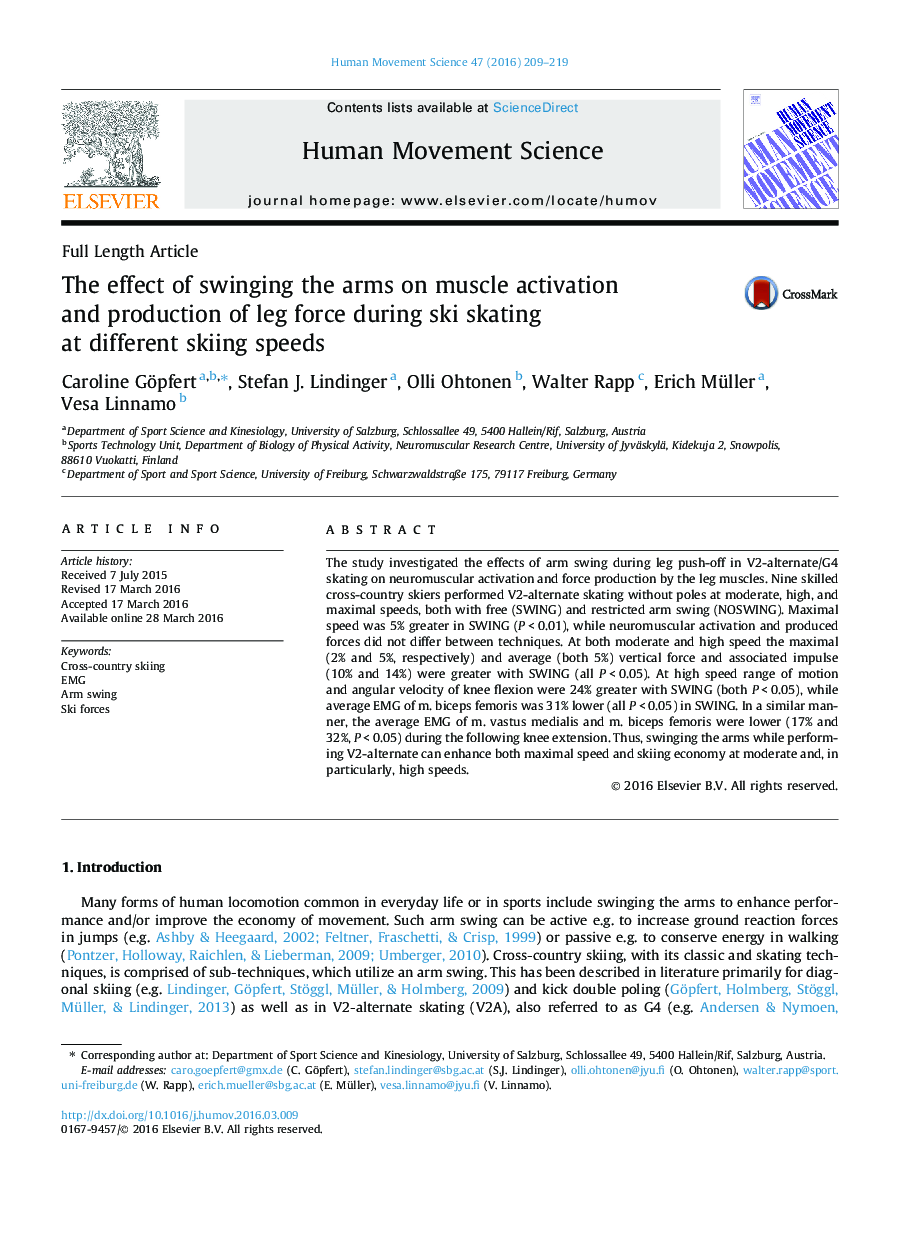| Article ID | Journal | Published Year | Pages | File Type |
|---|---|---|---|---|
| 7291517 | Human Movement Science | 2016 | 11 Pages |
Abstract
The study investigated the effects of arm swing during leg push-off in V2-alternate/G4 skating on neuromuscular activation and force production by the leg muscles. Nine skilled cross-country skiers performed V2-alternate skating without poles at moderate, high, and maximal speeds, both with free (SWING) and restricted arm swing (NOSWING). Maximal speed was 5% greater in SWING (PÂ <Â 0.01), while neuromuscular activation and produced forces did not differ between techniques. At both moderate and high speed the maximal (2% and 5%, respectively) and average (both 5%) vertical force and associated impulse (10% and 14%) were greater with SWING (all PÂ <Â 0.05). At high speed range of motion and angular velocity of knee flexion were 24% greater with SWING (both PÂ <Â 0.05), while average EMG of m. biceps femoris was 31% lower (all PÂ <Â 0.05) in SWING. In a similar manner, the average EMG of m. vastus medialis and m. biceps femoris were lower (17% and 32%, PÂ <Â 0.05) during the following knee extension. Thus, swinging the arms while performing V2-alternate can enhance both maximal speed and skiing economy at moderate and, in particularly, high speeds.
Keywords
Related Topics
Life Sciences
Neuroscience
Cognitive Neuroscience
Authors
Caroline Göpfert, Stefan J. Lindinger, Olli Ohtonen, Walter Rapp, Erich Müller, Vesa Linnamo,
